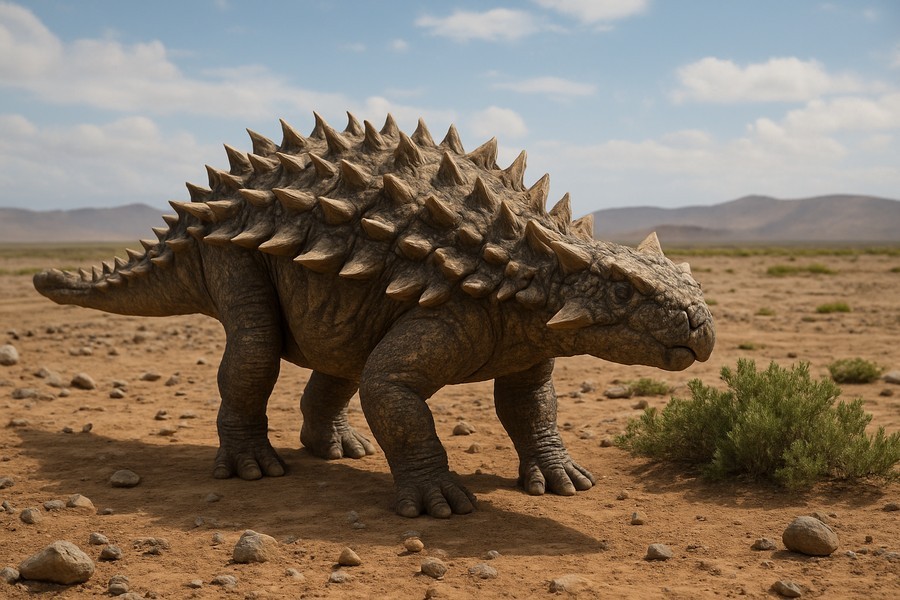
Unprecedented Dinosaur Species Discovered in Morocco
Imagine a dinosaur that lived about 165 million years ago, strolling along a floodplain that today is part of Morocco. This dinosaur was no ordinary creature; it was decked out in a unique set of armor and spikes, unlike anything other creatures had. This dinosaur, named Spicomellus, has recently been the subject of exciting research.
Understanding Spicomellus
Discovered near the Atlas Mountains close to a town known as Boulemane, Spicomellus is unlike any dinosaur we've come across so far. It was roughly 13 feet long and could have weighed between one to two tons, making it an impressive sight. It was a herbivore, moving on four legs at a slow pace, and was encased in a protective shell. This dinosaur is believed to be the oldest member of the ankylosaurs, a group of armored dinosaurs resembling tanks.
Unique Armor and Spikes
What sets Spicomellus apart from other dinosaurs and animals, both extinct and living, is its peculiar armor. Not only did it have long, sharp spikes on each of its ribs, a characteristic not seen in any other animal, it also displayed golf-club length spines protruding from a collar around its neck. This armor was not just for show; it potentially played a dual role of defense and attraction.
Armor: Defense or Display?
While the armor certainly served as a protective shield against larger carnivorous dinosaurs, its exact function remains unclear. The neck spikes, in particular, seemed excessive for purely defensive purposes. In the animal kingdom, structures that seem impractical or difficult to carry are often associated with sexual attraction. For instance, a deer's antlers or a peacock's tail are used for courtship or territorial displays. The same possibility is considered for Spicomellus' extravagant armor. It might have been used in mating displays or competitions within the same species.
Discovering More about Spicomellus
Despite the lack of a complete skeleton, the partial remains give us a good understanding of Spicomellus. It was previously known only from a single rib fragment found before the recent discovery of other fossils. The dinosaur had short spikes covering its back, a bony collar with plates, and two pairs of spikes projecting outward above the neck. Additionally, it had a pelvic shield and two large spikes above its hips.
Furthermore, the dinosaur's distinct fused tail vertebrae suggest it might have had a weapon, perhaps a club or spikes, on its tail to fend off predators. This is a trait observed only in ankylosaurs with tail weapons, indicating that these weapons appeared in ankylosaurs much earlier than previously thought.
Ankylosaurs: Successful Herbivores
Ankylosaurs were among the most successful herbivorous dinosaurs. They're closely related to another group of plant-eaters known as stegosaurs, which boasted bony plates on their backs and spiky tail weapons. Ankylosaurs managed to outlive stegosaurs, surviving until the end of the Cretaceous Period, when an asteroid hit the Earth, marking the end of the dinosaur era.
Armor Evolution in Ankylosaurs
Early members of dinosaur groups often have less elaborate body structures compared to their later counterparts. However, Spicomellus proved this theory wrong for ankylosaurs. Its armor was much more complex than that of later ankylosaurs, with no later members of the group having spiky ribs. The simpler armor in later species could be due to a shift towards having a primarily defensive role due to increased predator pressure in the Cretaceous era when predators grew exceptionally large.
